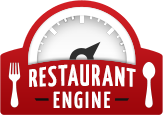New Safety Guidance for Dining Room Reopenings
Hundreds of restaurants restarted dine-in service today in Texas. Thousands of dining rooms are open in Georgia since Governor Brian Kemp allowed reopenings on Monday. In dozens of other states, restaurant workers are looking forward to reopening dining rooms within the month of May. “I am pretty excited to have our guests back in the dining room!” tweeted one server this week. Patrons are equally excited, “We’re thinking of our favorite places. Excited to return very soon.”
As customers return to order their favorite dishes, government officials are issuing new safety regulations to ensure that everyone limits the transmission of the coronavirus. Although new municipal guidance arrives almost daily, most rules can be grouped together under broad categories.
The FDA has created a simple guide outlining the best practices for food businesses. In addition, state officials are providing additional rules to supplement and reinforce these FDA guidelines.
Occupancy Limited to 25%
In an effort to remain cautious and ensure that patrons have ample space to stay six feet apart from one another at all times most states are limiting restaurants to 25% of their building’s listed capacity. Limiting occupancy to 25% is a mandatory requirement in most states.
“Thank you to the many families and small biz owners adapting to #SocialDistancing guidelines,” tweeted Las Vegas Councilman Brian Knudsen. Another restaurant owner agreed, “We are super excited and look forward to seeing everyone eating in our dining room again. We greatly appreciate everyone’s business during these difficult times.”
Most dining rooms are operating at limited capacity, capped at 25% of building listed occupancy limits, in accordance with social distancing regulations. Even for restaurants without this exact percentage requirement, this common sense limit is good practice for all dining room reopenings.
Free Hand Sanitizer
Most states encourage — and states like Texas require — restaurants to provide free hand sanitizer to guests upon entering dining premises. Texas officials require restaurant owners to install dispensers near all entrance doors. A copy of the state’s latest restaurant safety bulletin can be found as a PDF here.
Owners can affix refillable containers to the doorframe, or set up a small table beside the entryway. Alcohol-based hand sanitizers should contain at least 60% alcohol by volume. A list of all federally recognized disinfectants can be found here.
20 Second Hand Washing
All restaurant employees must wash their hands often with soap and water for at least 20 seconds. In addition to preventative hand washing on a periodic basis, hand washing is mandated after each occurrence of any of the following events: eating, coughing, sneezing, blowing one’s nose, going to the bathroom, or touching a doorknob.
Patrons should also be encouraged to wash their hands. Restaurant owners should install prominent placards within washrooms, stalls, doorways, and hallways.
Valet Service Suspension
Attendants who enter vehicles of other people will be exposed to high levels of potentially contagious air particulate matter. For this reason, to limit the transmission of coronavirus, most states are prohibiting elective valet service. Some states are permitting valet service for disabled customers, provided that attendants wear respiratory masks.
Masks and Gloves
Sterile, food-grade gloves are still in good stock in most places around the country, but NIOSH-certified respirators and masks are still in short supply. Although each additional layer of protection helps to reduce the likelihood of coronavirus transmission, restaurant owners should attempt to purchase the highest quality gloves and masks available to them. The CDC provides information about masks here.
Distrust marketing claims by private websites or online advertisements. Many marketing agencies have made false claims regarding the effectiveness of their equipment. Refer to official CDC and FDA guidance only.
Many states and municipalities are subsidizing the costs of gloves and masks directly. The FDA provides a food safety guide here. Follow government guidelines and official updates carefully regarding equipment like masks and respirators. Owners should inquire with local representatives and food industry regulators about any subsidies that might be available.
Limit Table Size
Remember that the federal government requires all parties to maintain a physical distance of at least six feet apart from other parties, including dining and waiting lounges. Many restaurants have removed chairs, spaced tables farther apart, and taped X marks on tabletops. All of these practices help to remind patrons to separate themselves from other parties.
Common sense safety procedures continue. Restaurant owners should bear in mind that coronavirus is spread via respiratory droplets, so all efforts should focus on limiting this type of transmission. COVID-19 can be spread to others by asymptomatic persons who show no symptoms. Because of this hidden threat, everyone operating restaurant dining rooms should rigorously follow the practices specified in government protocols.
Photo by Clay Banks on Unsplash



Leave a Reply